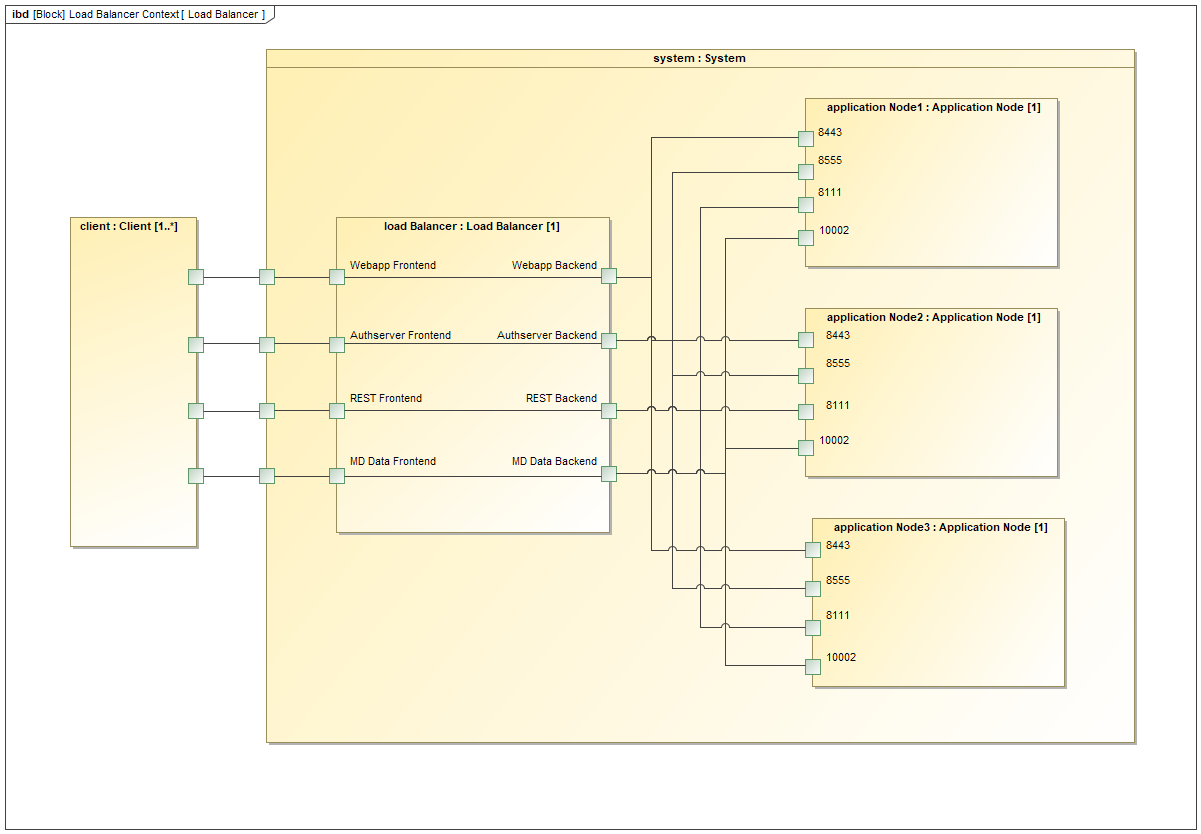Please note that this information is provided as a courtesy only and support services are not offered for any of the features described in this article.
A load-balancing proxy builds on top of Configuring TWCloud with a proxy. The main difference in this topology is that the load balancer (proxy) is external to the application nodes.
Unlike the use case for the proxy, where the constraint was one where we needed to bind all services to a given port, the load balancer can have 2 distinct topologies.
- As in the former use case, all services will be bound to a single port (443) and balanced among nodes listening to the native ports
- The load balancer will listen to the native ports, and load balance to the various nodes
In the diagram below, we are depicting the second topology, where each front end is bound to the native port and forwarded to the load-balanced backend.
Analogous to the HTTP Proxy depiction in Configuring TWCloud with a proxy, a single front end can be configured to handle all of the HTTPS services on a single port and route to the respective load-balanced backend.
